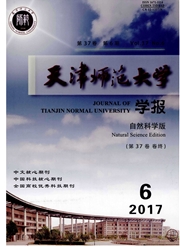

 中文摘要:
中文摘要:
为了制备具有抗菌性和抗腐蚀性的医用不锈钢,通过离子注入方法,在镀有TiN薄膜的医用不锈钢317L上注入银离子,用振荡平板法测试了其对革兰氏阴性大肠杆菌(E.coil)和革兰氏阳性金黄色葡萄球菌(S.aureus)的抗菌率;用电化学腐蚀方法检测了薄膜在Hank's模拟体液中的耐腐蚀性能;通过X射线光电子能谱(XPS)和俄歇电子能谱(AES)分析了薄膜的结构特征和各元素的深度分布.结果表明,当离子注入剂量接近饱和注入剂量时,样品的抗菌性能最强,但其抗腐蚀性相应下降.
 英文摘要:
英文摘要:
In order to make medical stainless steel of good antibacterial and corrosion resistance, silver ion is implanted into medical stainless steel 317L with TiN film. Flat board-vibrating method is used to test antibacterial rate for E. coil and S. aureus bacteria. Electrochemical corrosive method is chosen to test the corrosion resistance of the film in Hank's simulated human plasma. Structure properties of film and the depth distribution of the elements are investigated by XPS and AES. The results show that the best antibacterial property is obtained against bacteria when its ions dose approaches to the saturated dose, but corrosion resistance decreases accordingly.
 同期刊论文项目
同期刊论文项目
 同项目期刊论文
同项目期刊论文
 期刊信息
期刊信息
